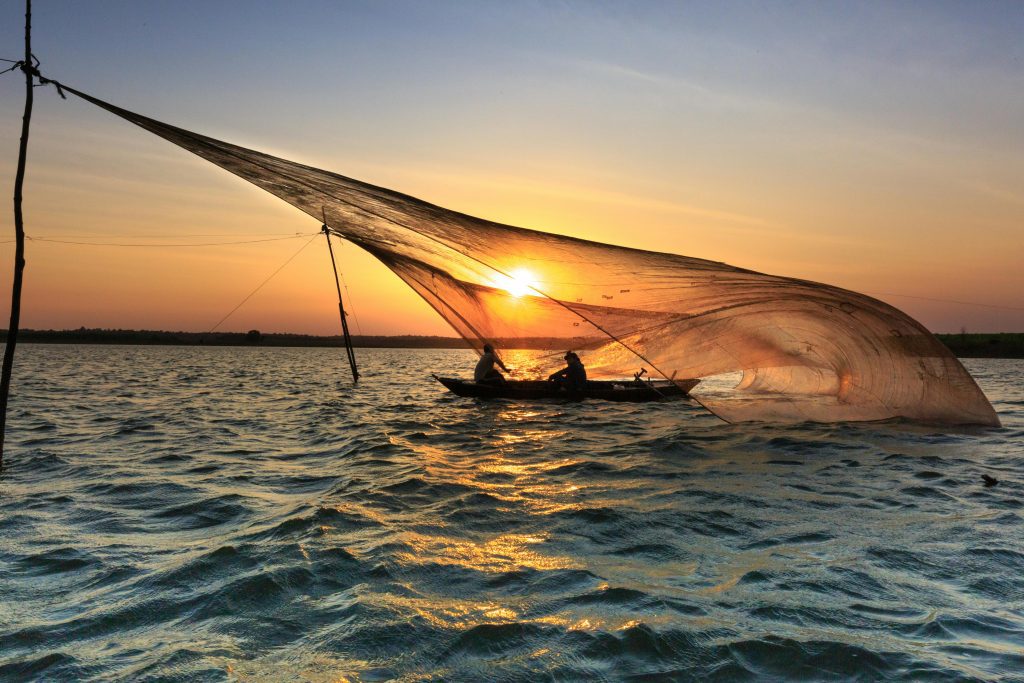Bottom trawling is one of the most destructive fishing methods in use today.
Massive weighted nets scrape the ocean floor, catching everything in their path – fish, corals, even centuries-old marine habitats.
The damage is so severe that scientists compare it to clear-cutting a forest or bulldozing a grassland.
Bottom trawling disrupts entire ecosystems threatens the livelihoods of small-scale fishermen.
Yet, it continues because industrial fishing operations prioritize short-term profit over long-term sustainability.
How Bottom Trawling Works
Bottom trawling involves dragging huge nets, sometimes as wide as a football field, along the seafloor.
These nets are weighed down with heavy doors or rollers to keep them pressed against the ocean bottom.
As they move, they scoop up everything:
- Target species like cod, shrimp, and flounder.
- Non-target species (bycatch), including turtles, sharks, and juvenile fish.
- Seafloor habitats like coral reefs, sponges, and underwater vegetation.
There are two main types of bottom trawling:
- Otter Trawling – Uses large “otter boards” to keep the net open horizontally.
- Beam Trawling – Uses a rigid metal beam to hold the net wide.
Both methods are brutally efficient at catching fish and just as efficient at destroying marine life in the process.
Where is Bottom Trawling Happening?
This practice is widespread in:
- The North Sea (for cod and flatfish).
- The South China Sea (for shrimp).
- The Bering Sea (for pollock).
- Coastal regions of South America and West Africa.
Industrial fleets often operate in international waters, where regulations are weak or nonexistent.
Ecological Impacts of Bottom Trawling
Bottom trawling has devastating effects on the ecosystem, like:
1. Habitat Destruction:
The ocean floor is a complex ecosystem. Coral reefs, sponge beds, and seagrass meadows provide shelter for countless marine species.
Bottom trawling flattens these structures and turn thriving habitats into barren wastelands.
- Deep-sea corals, some of which take centuries to grow, are ripped apart in seconds.
- Seagrass beds, crucial for carbon storage, are uprooted.
Mud and silt stirred up by trawling can smother nearby marine life.
Once these habitats are gone, they may never recover.
2. Bycatch Crisis:
Bottom trawling doesn’t discriminate. For every ton of shrimp caught, up to 10 tons of other marine life is killed and discarded.
This includes:
- Endangered species like sea turtles and rays.
- Juvenile fish that haven’t had a chance to reproduce.
- Deep-sea creatures that play vital roles in the ecosystem.
Most of this bycatch is thrown back dead or dying.
3. Climate Impact:
The ocean floor stores massive amounts of carbon.
When trawling disturbs the seabed, it releases this carbon back into the water where it can eventually enter the atmosphere as CO₂.
Studies estimate that bottom trawling emits as much CO₂ as the entire aviation industry.
This makes it not just an ecological disaster, but a major contributor to climate change.
Economic and Social Consequences of Bottom Trawling
Bottom trawling is incredibly efficient at catching fish, so efficient that it often depletes stocks faster than they can recover.
- Cod fisheries in Newfoundland collapsed in the 1990s due to overfishing and trawling.
- European hake and sole populations are declining rapidly.
Once fish stocks crash, fishing communities suffer. Jobs disappear, coastal economies collapse, and food security is threatened.
Who Really Pays for Bottom Trawling?
People. You and I.
- Small-scale fishermen lose access to dwindling fish stocks.
- Taxpayers fund subsidies that keep destructive trawling fleets afloat.
- Future generations inherit oceans stripped of biodiversity.
The industry profits now but the true cost is paid by everyone else.
The Fight Against Bottom Trawling
Scientists are sounding the alarm. Research consistently shows that bottom trawling is unsustainable.
Marine biologists, ecologists, and climate scientists agree:
- Protected areas work – Where trawling is banned, marine life rebounds.
- Alternative methods exist – Midwater trawling, traps, and line fishing cause far less damage.
Some regions have already restricted bottom trawling:
- The EU has banned it in deep-sea vulnerable areas.
- New Zealand prohibits trawling in sensitive habitats.
- Costa Rica has established large marine protected areas (MPAs).
But enforcement is weak, and many fleets simply move to less-regulated waters.
Sustainable Fishing Alternatives
There are better ways to fish:
- Midwater trawling (doesn’t touch the seafloor).
- Pole-and-line fishing (minimal bycatch).
- Aquaculture innovations (when done responsibly).
The technology exists, what’s missing is political will.
What Can Be Done?
Consumer choices matter. You can help reduce demand for trawled seafood:
- Avoid shrimp, cod, and flounder unless certified sustainable.
- Look for labels like MSC (Marine Stewardship Council) or Friend of the Sea.
- Choose local, small-scale fisheries over industrial trawler-caught products.
- Support stronger policies
- Advocate for marine protected areas (MPAs) where trawling is banned.
- Push governments to end subsidies for destructive fishing.
- Support NGOs like Oceana, Sea Shepherd, and WWF fighting against bottom trawling.
If bottom trawling continues unchecked, we risk:
- Empty oceans – No fish left for future generations.
- Lost biodiversity – Irreplaceable species gone forever.
- Worsening climate change – More carbon released from the seabed.
But it’s not too late. With smarter fishing practices, stricter regulations, and consumer awareness, we can turn the tide.
Bottom Line
Bottom trawling is ecological vandalism on a global scale. It destroys habitats, wastes marine life, and accelerates climate change – all for short-term profit.
The solutions exist. The question is whether we’ll act before it’s too late.
The ocean doesn’t have a voice. We do.
